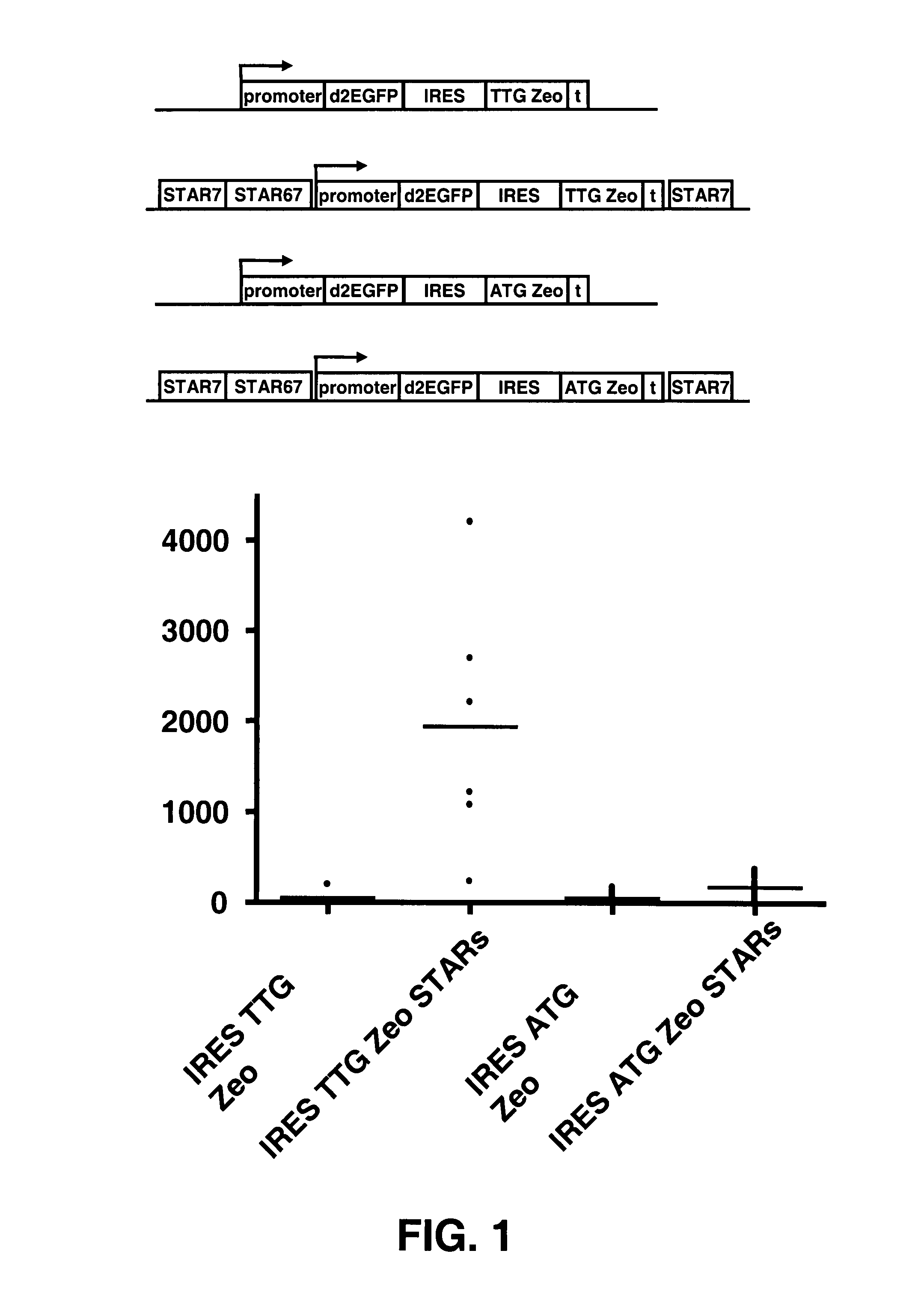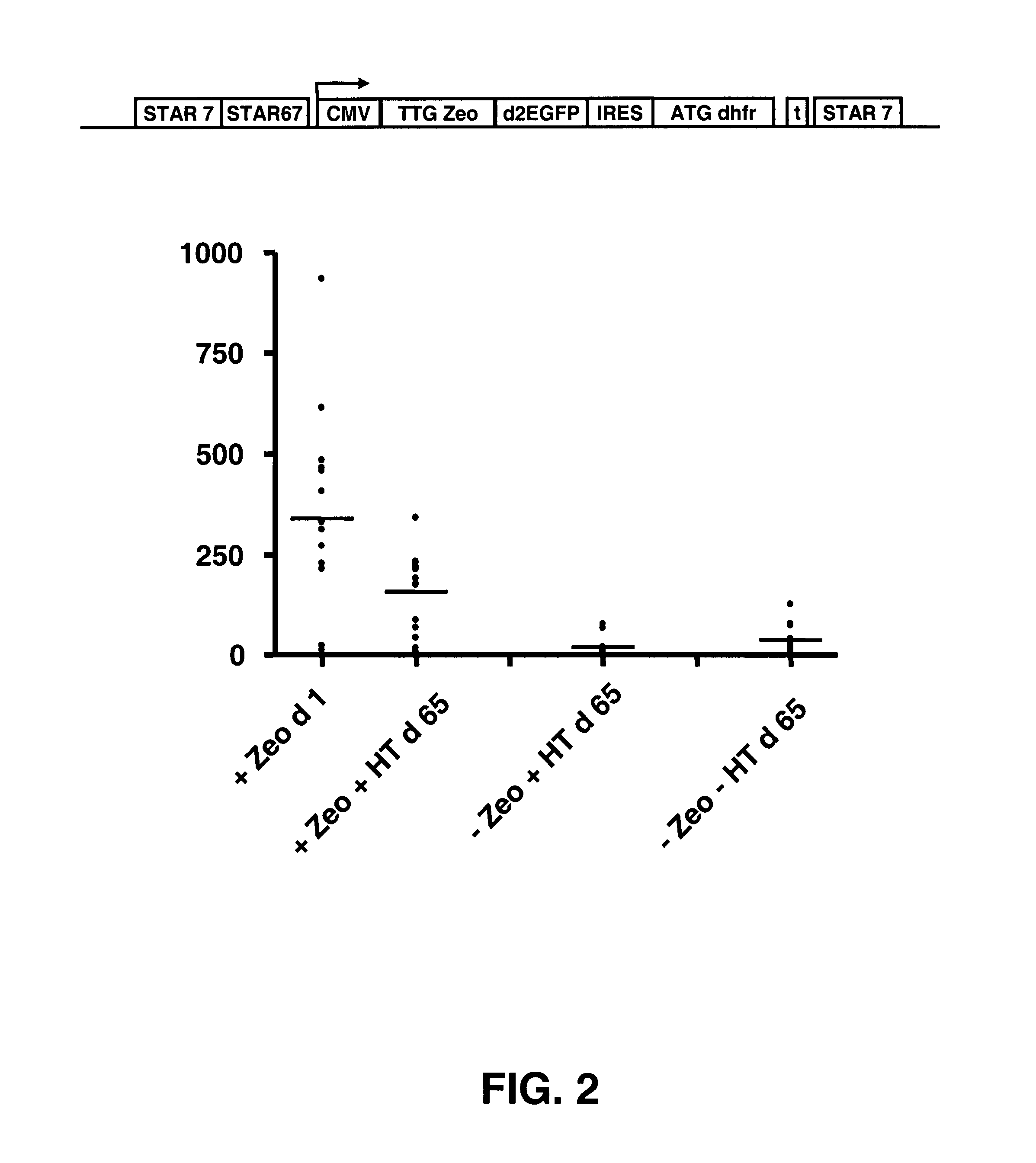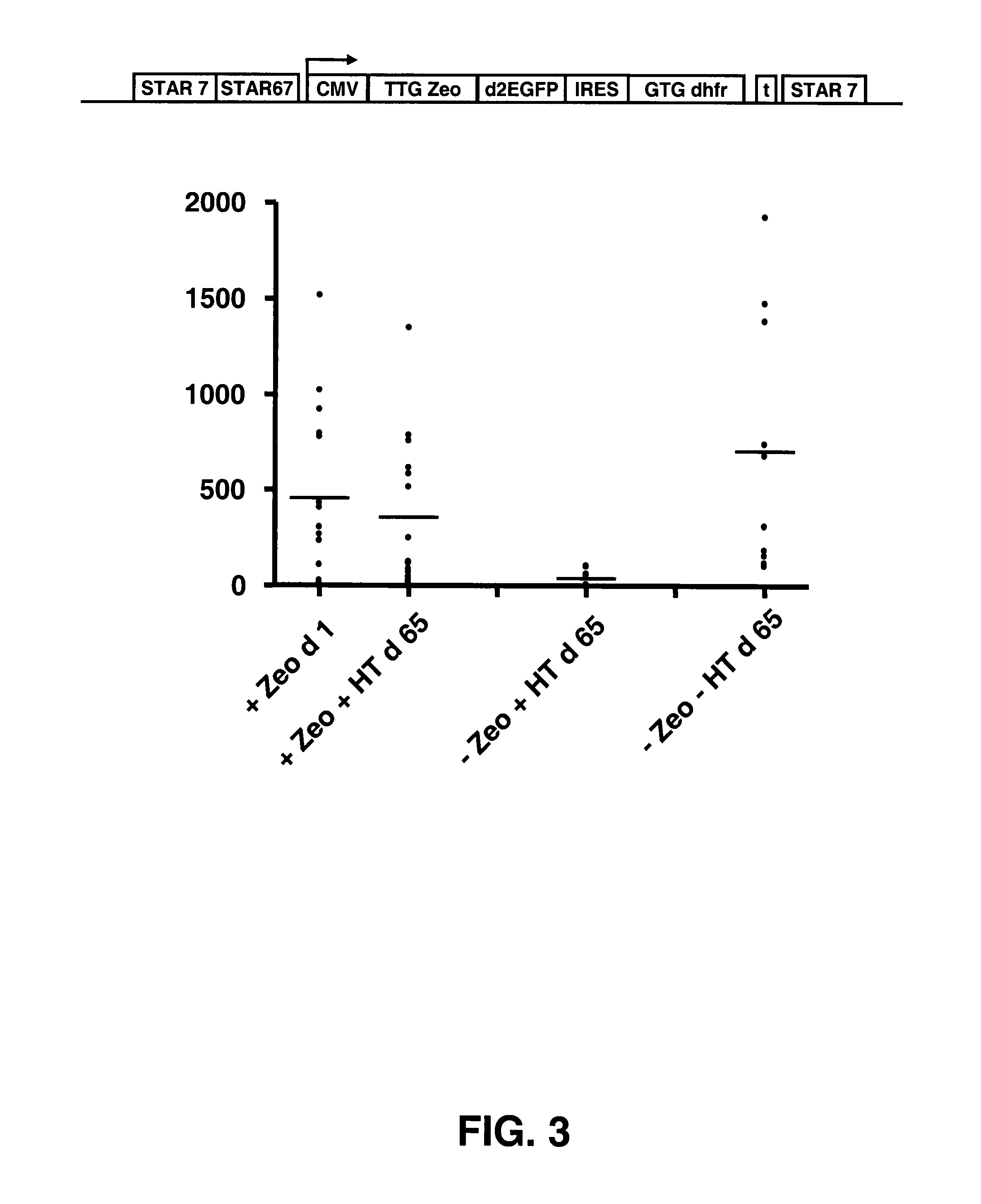Selection of host cells expressing protein at high levels
- Summary
- Abstract
- Description
- Claims
- Application Information
AI Technical Summary
Benefits of technology
Problems solved by technology
Method used
Image
Examples
example 1
Stringent Selection by Placing a Modified ZEOCIN™ Resistance Gene Behind an IRES Sequence
[0096]Examples 8-26 of US 2006 / 0172382 have shown a selection system where a sequence encoding a selectable marker protein is upstream of a sequence encoding a protein of interest in a multicistonic transcription unit, and wherein the translation initiation sequence of the selectable marker is non-optimal, and wherein further internal ATGs have been removed from the selectable marker coding sequence. This system results in a high stringency selection system. For instance the Zeo selection marker wherein the translation initiation codon is changed into TTG was shown to give very high selection stringency, and very high levels of expression of the protein of interest encoded downstream.
[0097]In another possible selection system (i.e., the system of the invention) the selection marker, e.g., Zeo, is placed downstream from an IRES sequence. This creates a multicistronic mRNA from which the Zeo gene ...
example 2
Stability of Expression by Placing a Modified dhfr Gene Behind an IRES Sequence
[0102]Modification of the translation initiation codon of the ZEOCIN™ selection marker to a translation initiation codon that is used much less frequently than the usual ATG codon, results in a high stringency selection system. In the described selection system of US 2006 / 0172382, the TTG Zeo is placed upstream of the gene of interest. In another possible selection system the Zeo selection marker was placed downstream of an IRES sequence (present application, see example 1). This creates a bicistronic mRNA from which the Zeo gene product is translated from translation initiation codons in the IRES sequence.
[0103]In this experiment, embodiments of these two systems were combined. We placed a TTG selection marker upstream of the reporter gene and coupled a GTG or TTG modified metabolic marker with an IRES to the reporter gene. Different selection marker genes can be used, such as the ZEOCIN™ and neomycin re...
example 3
Increased Expression by Placing a Modified dhfr Gene Behind an IRES Sequence is not the Result of Gene Amplification
[0116]Use of the dhfr gene as a selection marker in the prior art often relied on amplification of the dhfr gene. A toxic agent, methotrexate was used in such systems to amplify the dhfr gene, and concomitantly therewith the desired transgene, of which up to many thousands of copies could be found integrated into the genome of CHO cells after such amplification. Although these high copy numbers lead to high expression levels, they are also considered disadvantageous because so many copies can lead to increased genomic instability, and further removing methotrexate from the culture medium leads to rapid removal of many of the amplified loci.
[0117]In Example 2, no methotrexate was used to inhibit the DHFR enzyme activity. Only the hypoxanthine and thymidine precursor were removed from the culture medium, and this was sufficient to achieve both stability of protein expres...
PUM
| Property | Measurement | Unit |
|---|---|---|
| concentrations | aaaaa | aaaaa |
| concentrations | aaaaa | aaaaa |
| concentrations | aaaaa | aaaaa |
Abstract
Description
Claims
Application Information
 Login to View More
Login to View More - R&D
- Intellectual Property
- Life Sciences
- Materials
- Tech Scout
- Unparalleled Data Quality
- Higher Quality Content
- 60% Fewer Hallucinations
Browse by: Latest US Patents, China's latest patents, Technical Efficacy Thesaurus, Application Domain, Technology Topic, Popular Technical Reports.
© 2025 PatSnap. All rights reserved.Legal|Privacy policy|Modern Slavery Act Transparency Statement|Sitemap|About US| Contact US: help@patsnap.com



